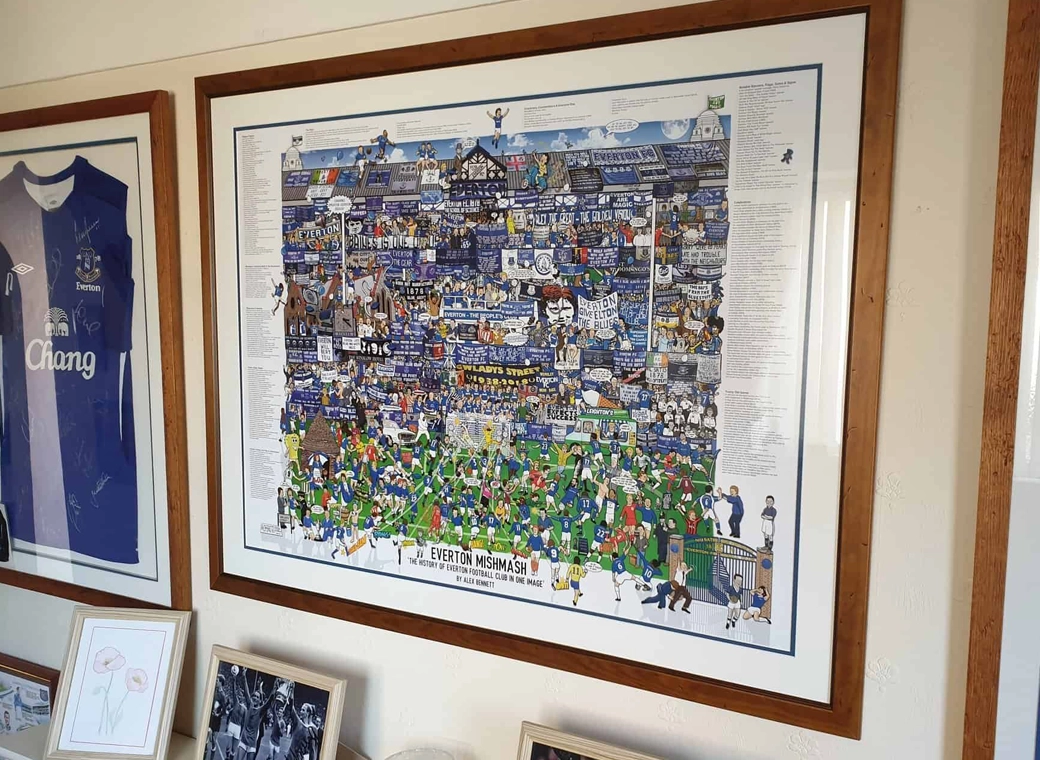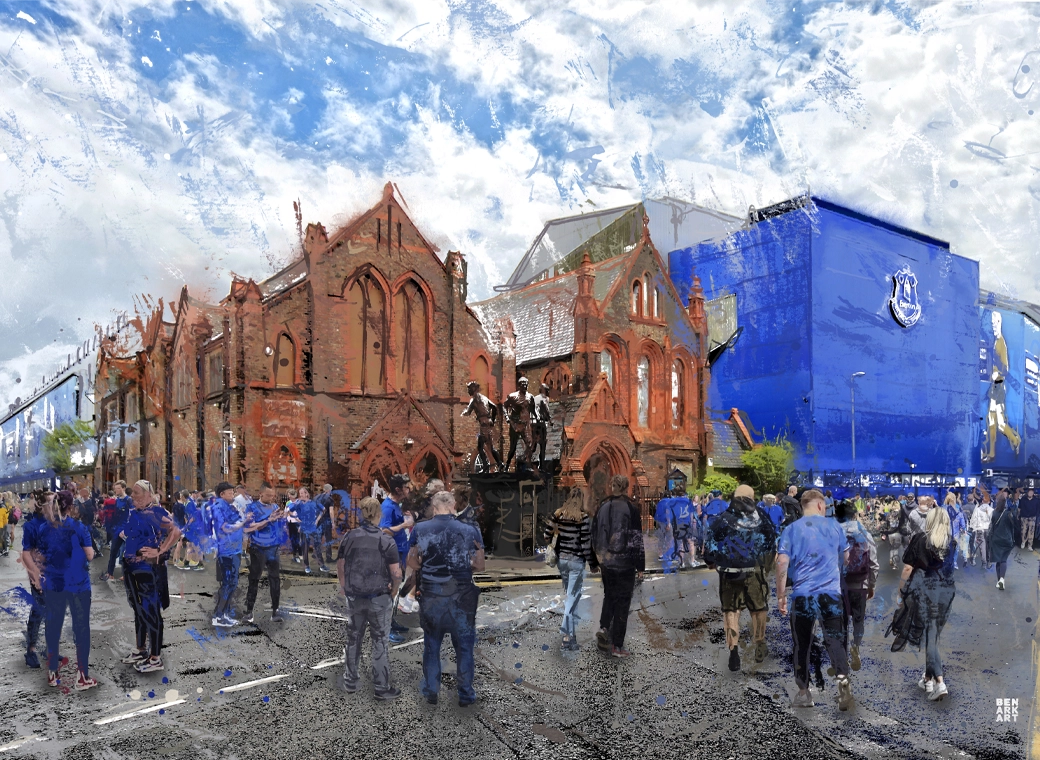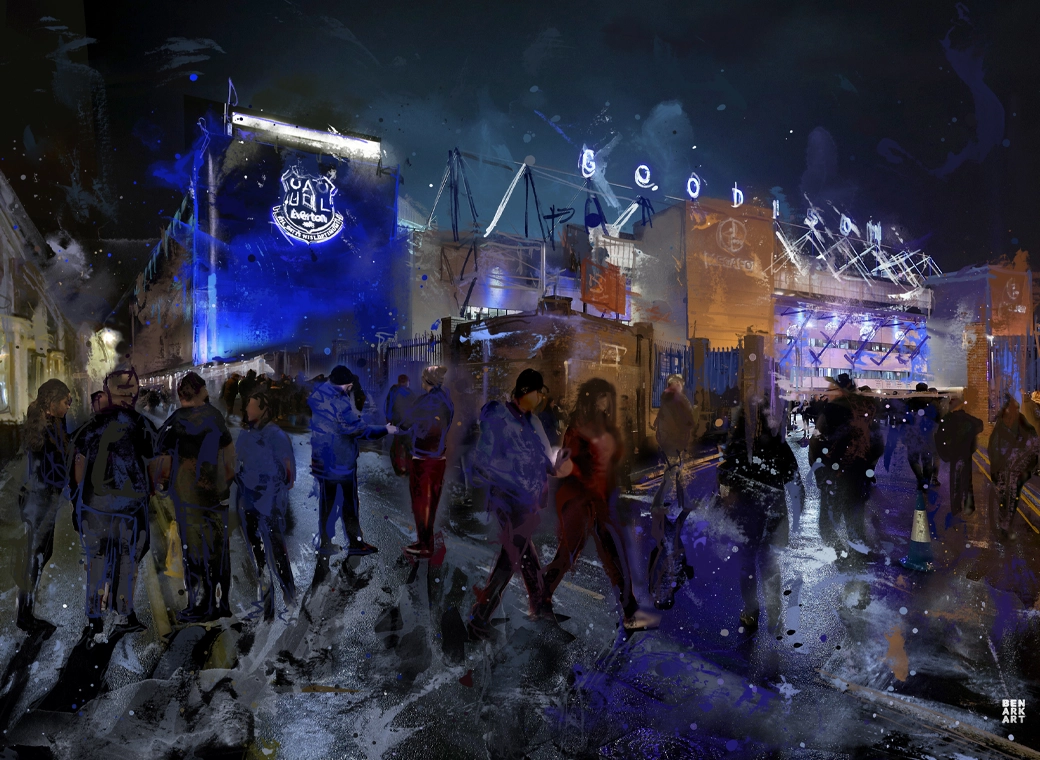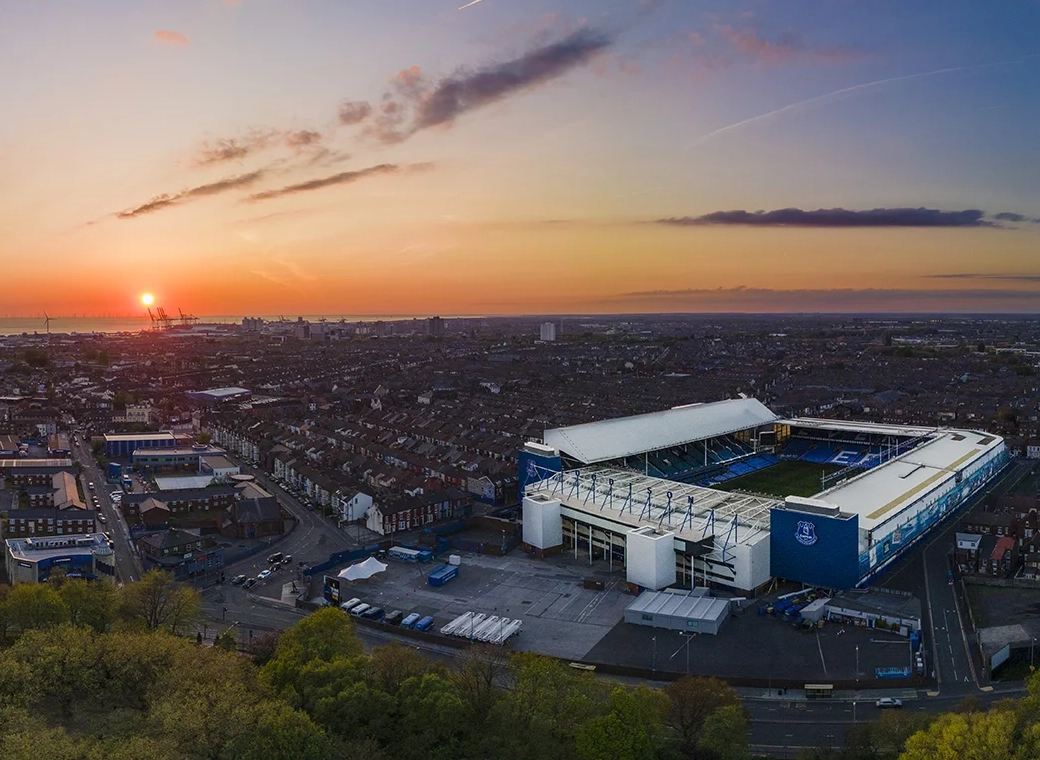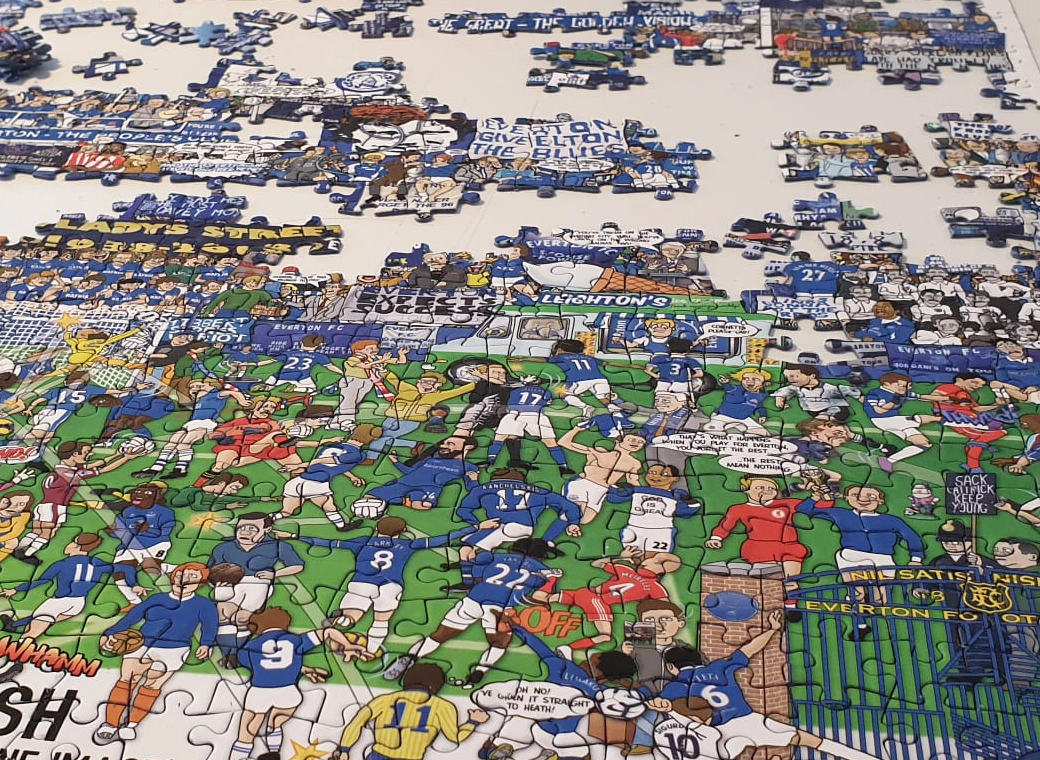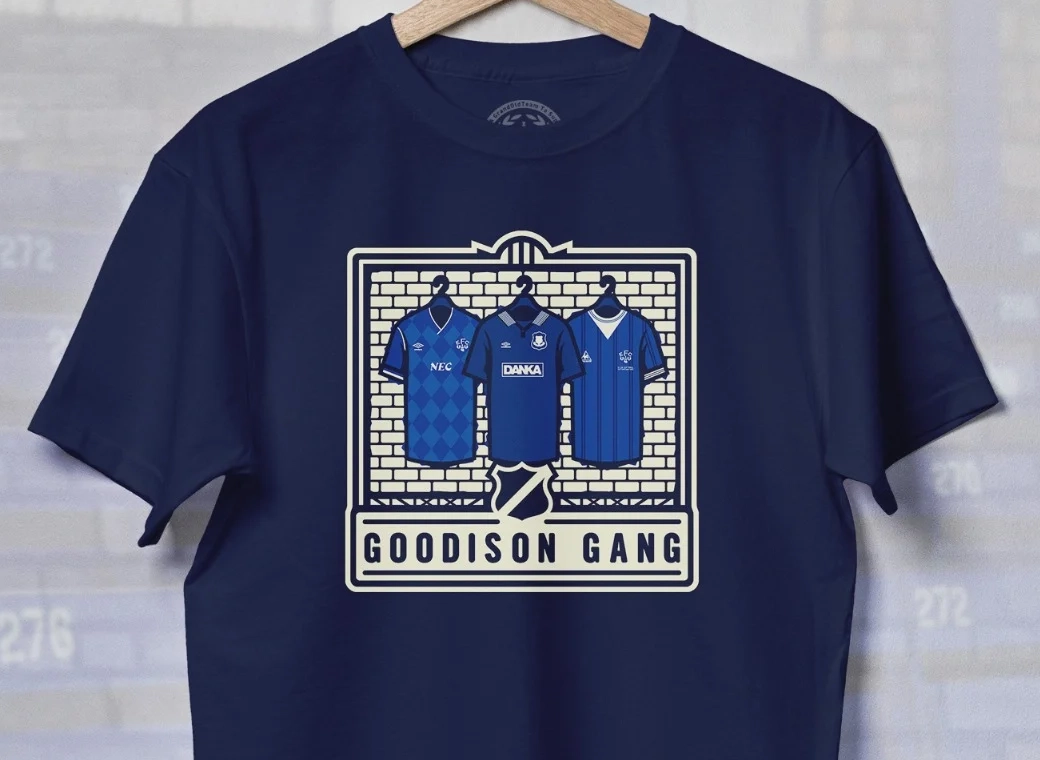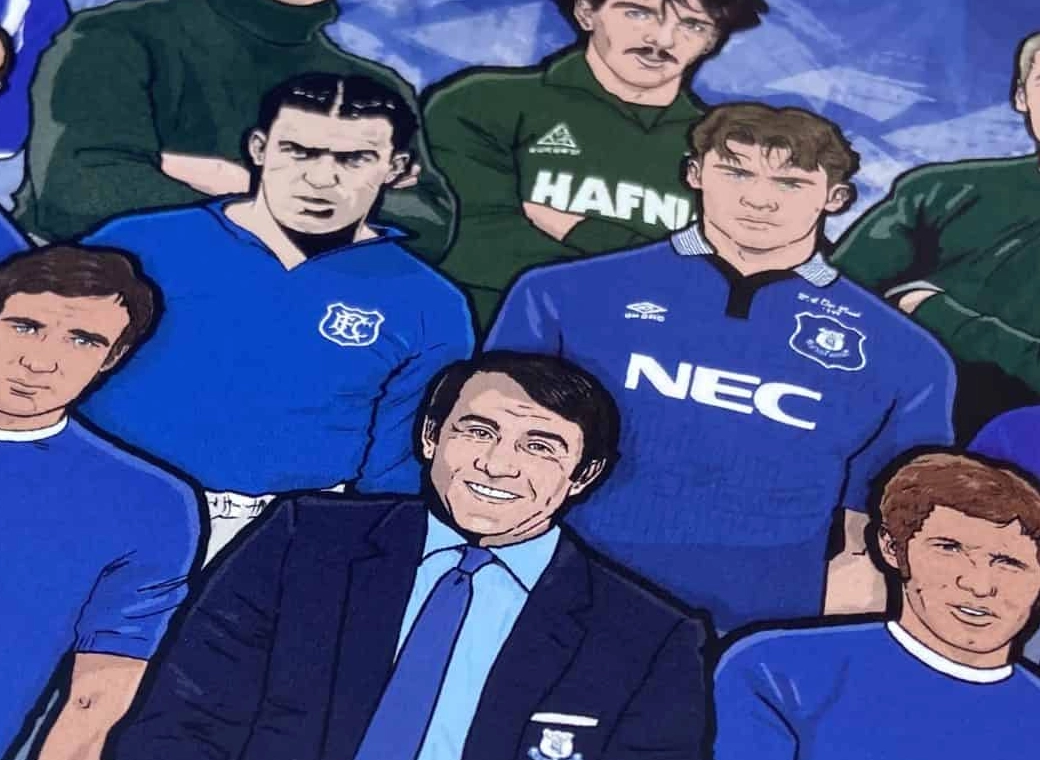Attacking Trident Spearheads Koeman’s Everton Plan Against Spurs via Royal Blue Mersey
Tactical analysis of Everton’s draw against Tottenham
With a new manager, new signings incoming, and injuries to two key players, Everton’s plan for their opening match against Tottenham Hotspur this weekend was relatively unknown coming into the match.
Despite missing Ashley Williams, Romelu Lukaku, and Seamus Coleman though, Ronald Koeman developed a solid tactical plan to deal with a dangerous Spurs side. However, the team’s fitness clearly waned as the match progress, and Koeman had limited options off the bench to counter a smart tactical move by his counterpart, Mauricio Pochettino.
As a result, Koeman and the Toffees were forced to settle for a point, but given the factors working against them heading into this match, a draw against a talented Tottenham side was a decent result.
Let’s take a look at Everton’s starting lineup and begin to break down exactly what happened on Saturday.
There were a couple of surprises in this lineup.
First, the choice of a three-man backline was an interesting one, given that Ashley Williams was not prepared to play in this match. It may well have been a specific tactical plan designed to shut down Spurs, but more on that later.
Gerard Deulofeu got the start at striker, which might have been a surprise six weeks ago, but after Koeman gave him multiple looks there in the preseason, he was an obvious choice with Lukaku out injured.
James McCarthy was chosen to start as a right-wingback, certainly not a position we’re accustomed to seeing him in.
Finally, Ross Barkley was inserted into the lineup as a right-sided attacking player. I’m very intentionally not calling the Englishman’s position a “right winger,” as he was not asked to provide a whole lot of width to the team.
Barkley was one-third of Everton’s attacking trio, which also included Deulofeu and Kevin Mirallas. Lacking a true striker, Koeman elected to use these three as a fluid attacking group.
A look at the heatmap of each of these players makes clear what that meant.
Kevin Mirallas
Ross Barkley
Gerard Deulofeu
Each player had a really free role in the attack, popping up on the left, right and middle at times throughout the match.
The concern with playing in this kind of set up is that the team will lack consistent width, particularly given that the team’s wingbacks were McCarthy (a central player) and Baines (who lacks the speed and 1 v. 1 ability of a true winger).
Everton’s solution to this problem? Don’t bother with the wide channels.
Under Martinez, excessive narrowness in attack was a significant problem — but there’s a major difference between how this worked under Koeman on Saturday and how it worked under Martinez for the second half of last season.
To put it simply, Koeman had his team set up to absorb pressure, press at key moments to force turnovers, and strike quickly on the break when they had numbers. Because the goal was to attack quickly whenever possible, the team didn’t need dangerous wide players to stretch the defense — the gaps in Spurs defense already existed because they were in transition.
The buildup that led to the free kick on which Barkley scored provides a perfect example of this.
At the start of the play, Tottenham is passing around the middle third of the field, with Leighton Baines, Kevin Mirallas, and Gareth Barry pressing the ball.
Barry intercepts the pass and immediately looks up the field. Kyle Walker and Eric Dier have both been pulled out of defensive position while trying to possess the ball, so Deulofeu has some space to operate.
Deulofeu gets himself into space, makes a gorgeous first touch pass into the space for Mirallas, who turns on the jets and forces Victor Wanyama to take a foul in a dangerous position.
Pressure in the midfield like this was the cause for most of Everton’s offense throughout the match. After turnovers, the Toffees were trying to get in behind Tottenham’s defense in three or four direct passes, significantly reducing the need for consistent contributions from the wide players.
Scoring an early goal let Everton play this style even more directly, as Spurs had no choice but to chase the match. The question, of course, was whether or not the Toffees could continue to defend for 90 minutes with Mason Holgate in the lineup, James McCarthy playing as a right-back, and a new central midfield pairing.
Fortunately for the Toffees, Koeman’s defensive setup was perfectly designed to take Tottenham’s attacking players out of the match.
Let’s recall how Everton lined up in this match.
Everton went with three center-backs and two wing-backs. Often, the way to attack teams playing with this setup is either to try to get in behind the more advanced wide defenders or to create 1 v. 2 situations with attacking wingers and full-backs against these players. Given the lack of raw pace Baines and McCarthy have, they should have been easily targeted by their opponent.
But, Spurs’ personnel doesn’t really lend itself to attacking the wide positions in this way. Take a look at the influence map of Tottenham’s attacking players.
Ignore Janssen for a moment (though we will certainly get back to him), and look at the average positions of Christian Eriksen, Dele Alli, Erik Lamela, and Harry Kane. Tottenham’s front four was incredibly central.
Eriksen lined up as the left winger, but he’s really more of a central player. Alli was the team’s No. 10, playing behind Kane by design. Lamela is capable of being dangerous in wide positions, but for whatever reason pulled himself into central channels as well.
This left Danny Rose and Kyle Walker with the responsibility to provide attacking width against a surprisingly compact Everton side. But these players couldn’t provide adequate levels of danger alone, and they had too much ground to cover to get in behind Baines and McCarthy with any kind of regularity.
When they did receive the ball in attacking positions, it was in a controlled 1 v. 1 scenario, lacking the support of their wingers, who were working in the center of the pitch.
Everything changed when Vincent Janssen came on for Eric Dier around the hour mark though.
Spurs changed to a 4-4-2 diamond formation, with Janssen and Kane up front on either side of the pitch.
With the additional attacking player available, when the ball got into the corner, the Spurs striker on that side would provide help to the attacking full-back, frequently creating a 1 v. 2 against Baines or McCarthy.
Ultimately, this kind of match-up led to Tottenham’s goal — the helping attacker was Toby Alderweireld at that moment, strangely enough. Tottenham simply had too many players forward on one wing for just Baines, with a little help from Barry, to handle. A good cross came in from Spurs’ right wing, and Holgate couldn’t handle Lamela at the back post.
Going forward, this may be the factor that limits Everton’s ability to continue using this 5-2-3 formation. Many other teams will be more than happy to use talented, pacey wide players to create mismatches against Baines, McCarthy, Coleman, or any other defender used in that wing-back position.
Once Williams (and maybe another new center-back) get introduced into the squad, Koeman may be alright with allowing teams to get in behind out wide and whip crosses in — Jagielka, Funes Mori, and Williams are all good in the air and he may be confident in their ability to prevent chances from those situations.
At the very least though, we’ve learned two things from Everton’s tactics in this match.
First, this setup is viable at least as an option from time-to-time and against certain opposition going forward. Whether Koeman wants to use three center-backs on a regular basis or he simply thought (correctly) that it would be a wise move against Tottenham is still unclear, but we at least know now that it is a real option.
Second, Koeman is willing to try different things, something we could not really say of Roberto Martinez. We saw the Dutchman use a traditional back-four for much of the preseason, but a back-three made sense here, so he went with it. This flexibility will serve Everton well for the rest of the 2016-17 season.
Read Full Article
Continue reading...














